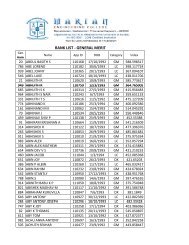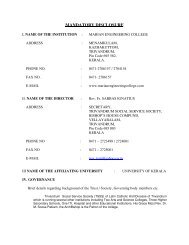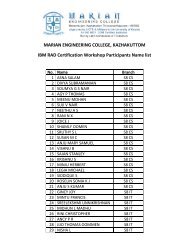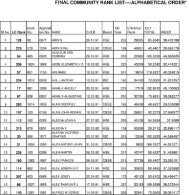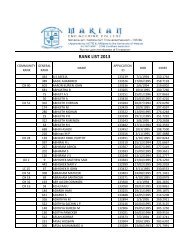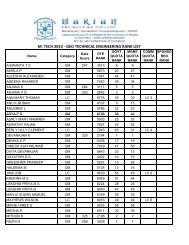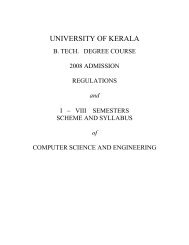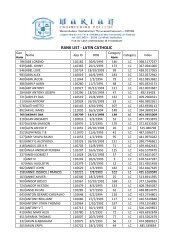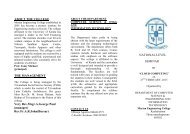UNIVERSITY OF KERALA - College of Engineering, Trivandrum
UNIVERSITY OF KERALA - College of Engineering, Trivandrum
UNIVERSITY OF KERALA - College of Engineering, Trivandrum
You also want an ePaper? Increase the reach of your titles
YUMPU automatically turns print PDFs into web optimized ePapers that Google loves.
08.807.3 Elective-V INDUSTRIAL WASTE WATER<br />
MANAGEMENT<br />
L T P/D Cr<br />
3 0 0 3<br />
Module I<br />
Effect <strong>of</strong> wastes on streams. Stream quality criteria for aquatic life. Desirable wastes characteristics. Industrial<br />
waste survey - organic materials - BOD, COD, TOD.<br />
Industrial water treatment process - Waste volume reduction, types <strong>of</strong> process for neutralization, equalization<br />
and proportioning <strong>of</strong> wastes.<br />
Module II<br />
Disposal into rivers - De-Oxygenation and Re-Oxygenation in rivers and streams - Development <strong>of</strong> Oxygen sag<br />
model - application <strong>of</strong> Streeter Phelp’s equation. Removal <strong>of</strong> suspended and colloidal solids – Flotation–<br />
problems - theory <strong>of</strong> coagulation – Sedimentation – Filtration - Discrete particle settling - Column analysis .<br />
Module III<br />
Removal <strong>of</strong> inorganic dissolved solids by Dialysis and ion exchange. - Membrane process - Adsorption<br />
isotherms - breakthrough curves. Manufacturing processes and treatment <strong>of</strong> pulp and paper mill wastes -<br />
Tannery wastes - Distillery wastes.<br />
References:<br />
1. Nelson Leonard Nemerow., “ Theories and Practices <strong>of</strong> Industrial Waste Treatment”, Addison, Wesley<br />
Publishing Company, Inc USA.<br />
2. Metcalf & Eddy, “Wastewater <strong>Engineering</strong>- Treatment, Disposal & Reuse”, Tata Mc Grawhill<br />
publishing Co Ltd.<br />
3. Webber. W. J, “Physico Chemical Process for Water Quality Control”.<br />
Question Paper: Duration: 3 Hours<br />
The question paper consists <strong>of</strong> Part A and Part B.<br />
Part A is for 40 marks. There will be 8 compulsory short answer questions <strong>of</strong> 5 marks each covering entire<br />
syllabus.<br />
Part B is for 60 marks. There will be 2 questions form each module. The candidate has to answer one question<br />
from each module.<br />
Note: No charts, tables, codes are permitted in the Examination hall .If necessary the same shall be given along<br />
with the question paper by the question paper setter.<br />
109



